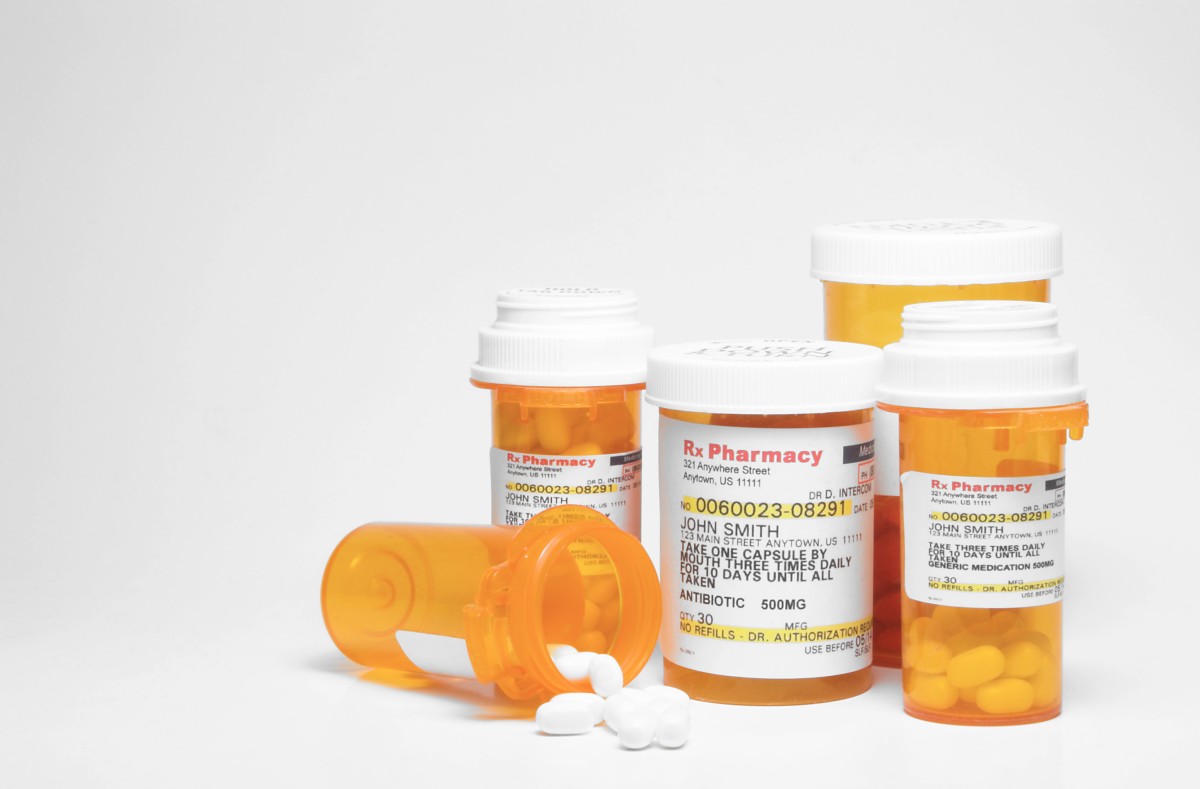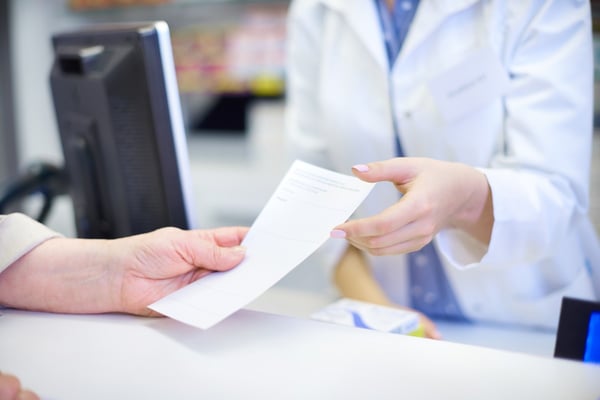Using Patient Education Videos to Support Preventive Care Strategies
As a healthcare provider, you know prevention saves lives. From routine screenings and lifestyle counseling to vaccinations and early detection,...
4 min read
Robert McDermott Apr 6, 2023 11:00:00 AM
 You’re likely familiar with the famous song “I Can See Clearly Now” by Johnny Nash. There are a few ways you might interpret his lyrics when approaching any challenge and seeing the obstacles in the way. A pessimist might immediately consider the sheer number of obstacles. The realist will acknowledge that obstacles exist in all endeavors. The optimist, on the other hand, might think “Good. Now that I can see them, I can figure out how to remove them.”
You’re likely familiar with the famous song “I Can See Clearly Now” by Johnny Nash. There are a few ways you might interpret his lyrics when approaching any challenge and seeing the obstacles in the way. A pessimist might immediately consider the sheer number of obstacles. The realist will acknowledge that obstacles exist in all endeavors. The optimist, on the other hand, might think “Good. Now that I can see them, I can figure out how to remove them.”
When it comes to electronic prescribing, the obstacles presented by primary non adherence, or a failure to fill a given prescription, it seems important to find a balance between the realist and optimist points of view. Sure, there are obstacles, and some may be outside of your control. But what you can control should drive you to seek solutions. That’s where ePrescribing comes in.
Quick Links
Prescription barriers are any number of factors, both internal and external, that interfere with a patient’s willingness or ability to fulfill a prescription. Dentists and doctors don’t write prescriptions superfluously; prescriptions are written to fulfill patient needs as part of shared healthcare goals. Prescription adherence is vital to providing the best care and achieving the best outcomes. That means, plain and simple, prescriptions need to get filled.
That said, try to find a healthcare provider who hasn’t had a patient leave a prescription unfilled. In most cases, it’s not done out of willful disregard for care directions, but instead a barrier that impedes a patient’s ability to fill the prescription. In fact, pharmacies estimate that out of every 100 prescriptions written, only 50-70 are filled. So what’s happening between your office and the pharmacy?
As we said there are internal and external prescription barriers that impact not just medication adherence but even the filling of prescriptions. The external barriers for dental and medical providers are easier to spot and can include:
And, on top of those obstacles, the internal barriers are sometimes far more significant:
There’s little doubt, and significant evidence to suggest, that something that seems as simple as an unfilled prescription, especially when it’s a preventable reason, can create significant healthcare challenges.
Some patients see medication and prescriptions as a supplement to other treatments and can, therefore, devalue the need to fill prescriptions. However, there’s nothing simple about an unfilled prescription. It has the potential to be more than just an oversight and can, in some cases, create major, potentially fatal, problems.
According to the World Health Organization, the impact of primary non adherence accounts for “up to 50% of treatment failures, around 125,000 deaths, and up to 25% of hospitalizations each year in the United States.” Further, it’s estimated that non adherence costs roughly $528.4 billion annually. From that data alone, we can imagine how much additional care and treatment for non adherent patients puts on healthcare providers, adding to an already overburdened healthcare system.
While some patients may not wish to discuss the factors that complicate filling prescriptions, there are ways that healthcare providers can help mitigate these obstacles. One of the most efficient ways to do that, which also provides significant benefits to your practice in other ways, is through the utilization of ePrescription software.
 How ePrescribing Helps Remove Barriers to Prescription Access
How ePrescribing Helps Remove Barriers to Prescription AccessOften, when discussing ePrescription software, it’s natural to focus on how it improves efficiency as well as patient safety. Those are important, and so is how a seamless provider-to-pharmacy experience can actually assist patients in getting the care and medications they need.
ePrescribing is remarkably convenient. For patients with transportation issues, it cuts out multiple trips to the pharmacy as well as potential long waits for a prescription to be filled. For some patients, multiple trips or even time-consuming trips to a pharmacy are difficult to schedule. Similarly, there are few things more frustrating and challenging than arriving at a pharmacy, prescription in hand, only to discover they don’t have the medication you need in stock, further delaying the process. ePrescribing may help prevent that.
ePrescribing is reliable. Lost prescriptions can create significant problems, aggravating already challenging time and transportation costs or limitations. With an ePrescribing solution in place, there are no worries about a patient tucking that prescription into a pocket or bag only to lose it or toss it later with receipts. That also means far fewer calls to your office and time spent duplicating the task.
ePrescribing improves accuracy and communication. From language barriers to ensuring the right strength and dosage for administration, ePrescribing can help prevent miscommunications. Further, messy handwriting jokes are soon to be a thing of the past. Prescription accuracy helps improve patient safety and, when combined with medication adherence, improves patient outcomes. All of that takes great communication and ePrescribing removes all of those barriers.
ePrescribing can help clarify costs ahead of time. One of the biggest challenges for patients in getting care is the cost. This includes uninsured or underinsured care as well as prescriptions. While most insurance plans offer some prescription drug coverage, some medications are still quite costly while other medications remain uncovered. ePrescriptions can help a patient understand the cost of medication, especially when dentists pair ePrescription software with an automated insurance verification application. That coupling will help patients understand what will be covered by insurance and what medication costs may be out of pocket.
ePrescribing can help ease a patient’s mind. Few things concern patients about medication more than having a bad experience. Medication errors and adverse drug events (ADEs), especially when significant, can be traumatic, even more so when they are preventable.
Leading ePrescription software, like iCoreConnect’s iCoreRx puts the Lexicomp® drug directory at your fingertips, providing you with invaluable information about drug treatment and potential interactions. Further, iCoreRx can help you detect potential interactions and allergies for your patient before you hit send. Knowing that you’ve got this kind of assistance quickly accessible should put you and your patients at ease.
Additionally, when it comes to ePrescribing, iCoreRx helps you get access to your patient’s prescription drug history, helping increase the safety of the prescriptions you write and keeping your patients safe from accidental overprescribing.
We all love efficiency, but let’s be honest, few providers entered medicine or dentistry to become efficiency experts. Most doctors and dentists have a love for their fields, but also an intense desire to help people. The solution is two fold. It’s important to ePrescribe efficiently and to capitalize on the ways in which ePrescribing helps and protects your patients.
Our end goal is similar to yours. We want to help improve efficiency while improving patient outcomes. If you’re looking to see how ePrescribing software can help you achieve those goals, book a demo with us today!

As a healthcare provider, you know prevention saves lives. From routine screenings and lifestyle counseling to vaccinations and early detection,...

There’s no denying that the AI boom is here. The American Medical Association reports that 66% of physicians are currently using artificial...

If only managing your practice’s revenue cycle came with a crystal ball. You could spot claim denials before they happen, predict when patients might...

If making decisions were simple, we wouldn’t have countless books, seminars, webinars, or conferences with experts weighing in about how to improve...

When it comes to healthcare practices, we may not think of applying customer service best practices. However, shifting to patient-focused care means...

For over a decade now, increasing numbers of states have been requiring prescribers to switch to electronic prescribing, most often for controlled...